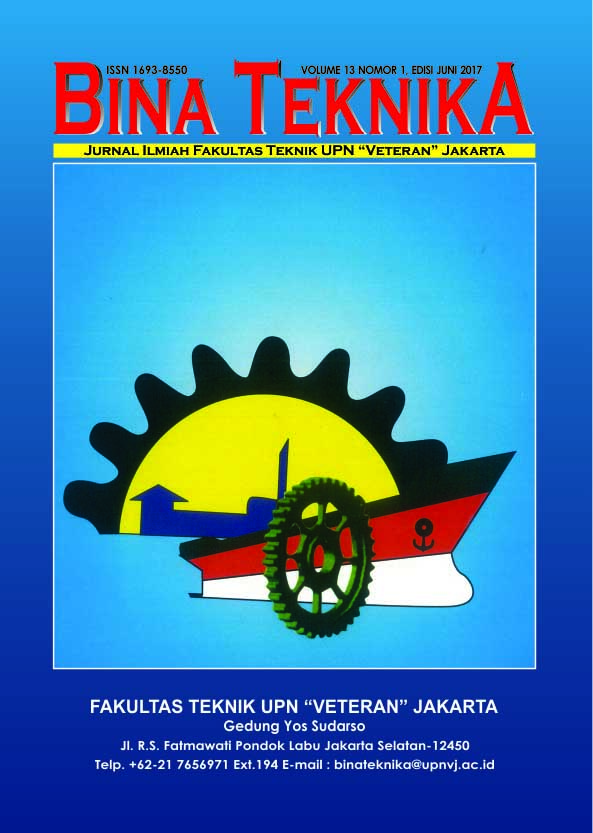PERENCANAAN DAN UJI PERFORMA ALAT PEMBAKAR SAMPAH ORGANIK
DOI:
https://doi.org/10.54378/bt.v13i1.22Keywords:
organic waste, incinerator, planningAbstract
Garbage is a part that can not be separated from human life, garbage is an item that is wasted or discarded, and is often regarded as something that is not useful. Garbage is also a major problem, especially in big cities. Trash negative impact on the environment, because the waste can lead to environmental pollution, disruption of cleanliness, safety and health. The objectives of this study were (1) identify the state of the art paradigm of organic waste by burning, (2) designing the incinerator simple as one alternative to appropriate technology and is equipped with a system of utilization of the heat produced, (3) gives a solution to the waste problem so it is useful to reduce the waste generated in landfills while, and (4) examine the performance of the incinerator that has been designed. The method of planning the incinerator is divided into (1) the design of the product, (2) the design process, and (3) engineering design, (4) a manufacturing process or manufacture tools, and (5) testing tool. The incinerator is designed in accordance with the planning, the construction of the incinerator is made of a metal plate with a thickness of 3 mm, the dimensions of the combustion chamber is the outer diameter of 350 mm, an inner diameter of 290 mm, and 410 mm high combustion chamber. Organic waste burner is capable of burning organic waste as much as 28 Kg/hour. Garbage burning rate of 9.33 Kg/h, the air discharge design results obtained at 0.0173 m3/sec.References
Abdullah, dkk, 1998, Energi dan Listrik Pertanian, JICA, Bogor.
Bolg, Mechanical, 2013, Nilai Kalori Bahan Bakar, (Online) (http://yefrichan.wordpress.com/2013/12/02/nilai-kalori-bahan-bakar/)
Budiman Arif. 2001. Modifikasi Desain dan Uji Unjuk Kerja Alat Pembakar Sampah (Incinerator) Tipe Batch. Skripsi. Jurusan Teknik Pertanian, Fakultas Teknologi Pertanian, IPB.
Hadiwiyoto, S., 1983, Penanganan dan Pemanfaatan Sampah, Yayasan Idayu, Jakarta.
Harahap, Gandhi, 1999, Perancangan Teknik Mesin, Penerbit: Erlangga, Jakarta.
Holman, J.P., (Terjemahan: E. Jasjfi), 1984, Perpindahan Kalor, Penerbit: Erlangga, Jakarta.
L. Singer, Ferdinand, dan Andrew Pytel, 1995, Kekuatan Bahan, Penerbit: Erlangga, Jakarta.
Pichel John. 2005. Waste Management Practices Municipal, Hazardous, and Industries.CRC Press. New York
Pradiko, Aziz, 2014, Perancangan Konstruksi Mesin Pengupas Buah Kenari Kapasitas 5 kg/jam, (Skripsi) Teknik Mesin, Universitas Nasional, Jakarta.
Pranomo, S., 2009, Incenarator Sederhana, (Online), (http://www.magelangkab.go.id/ dinkes/new//document/)
Sani, Rasio Ridho. 2014. Deklarasi Menuju Indonesia Bersih Sampah 2020 se-Kalimantan. Diunduh dari http://www.menlh.go.id/deklarasi-menuju-indonesia-bersih-sampah-2020-se-kalimantan/. Diakses tanggal 23 April 2015.
Sutjita, Deddy, 2010, Perancangan Konstruksi Rangka Alat Uji Tekan Material Polimer Kapasitas 6 kg Menggunakan Lasan, (Skripsi) Teknik Mesin, Universitas Nasional, Jakarta.
Zainuri, Ach. Muhib, 2008, Kekuatan Bahan, Penerbit: Andi Offset, Yogyakarta.
Downloads
Published
Issue
Section
License
Journal Bina Teknika grants open acces to all of its content, based on that matter makes all research papers published are freely available to public which ensures greater global excchange of knowledge
Journal Bina Teknika is licensed under a Creative Commons Attribution-NonCommercial-ShareAlike 4.0 International License.
Refers to these license, all research papers agree to the following terms:
- Attribution - Authors holds the credit of their research works published, in order to use materials from one or more research papers published in Bina Teknika should be given appropriate credit
- Non Commercial - All research papers published in Bina Teknika may not use for commercial purposes
- Share Alike - Any creation made under one or more concepts from research papers published in Bina Teknika should be distribute your contributions under the same license as original











